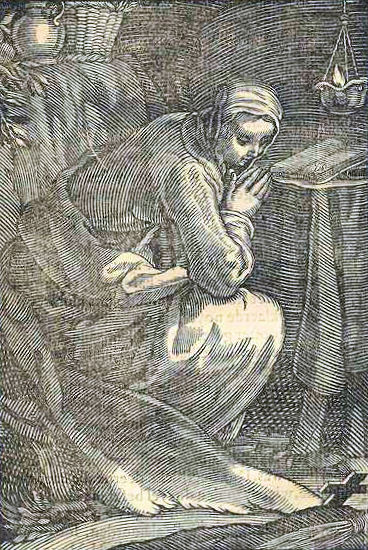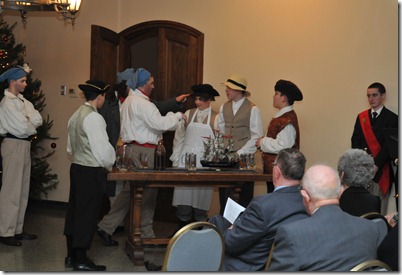Plinio Correa de Oliveira was born today, in the year 1908.
His life of the service of Holy Mother Church and Christian Civilization can be summed up in his own words:
"When
still very young, I marveled at the ruins of Christendom, Gave them my
heart, Turned my back on all I could expect, And made of that past full
of blessings, My future."

With
these words taken from an address made by the Brazilian jurist and
eminent conservative thinker Plinio Corrêa de Oliveira, Professor
Roberto de Mattei commences his biography of one of the twentieth
century's most remarkable Catholic men of action. Dr. Corrêa de
Oliveira's life spanned the period from 1908 to 1995, and it was as a
man of faith that he confronted the harrowing events of the past
century.
Roberto de Mattei's work,
The Crusader of the Twentieth Century,
is the first full-length biography of the life and times of Plinio
Corrêa de Oliveira, univeristy professor, journalist and man of action.
This book can be found here:
http://store.tfp.org/products/The-Crusader-of-the-20th-Century.html
A more popular version of his life story can be found here:
http://store.tfp.org/products/Plinio.html
In
his preface to this work, the late Cardinal Alfons Maria Stickler,
Librarian and Archivist of the Vatican wrote : " With the integrity of
his life as an authentic Catholic, Plinio Corrêa de Oliveira offers us a
confirmation of the Church's continuing fecundity. The difficulties of
these times for true Catholics are, in fact, occasions to influence
history by affirming perennial Christian principles. Such was the case
with this eminent Brazilian thinker, who demonstrated it boldly
maintaining, in an age of totalitarianism of every stripe and colour,
his unshakeable faith in the fundamental teachings and institutions of
the Church."
Prof. De Mattei's interesting book does not claim
to produce a complete biography of Dr. Corrêa de Oliveira nor does it
claim to expound the collection of his doctrinal corpus, but merely
proposes to offer the reader an introduction that will make it possible
to formulate a judgment of this great personage, loved and opposed with
the same passion.
It must be added that a rapid perusal of this
work clearly demonstrates that it was carried out in an objective and
scientific spirit, through a scrupulous control of the documents, which
include the nineteen books published by Plinio Corrêa de Oliveira and
the more than 2,500 articles and essays he wrote in the journals
O Legionario,
Catolicismo as well as in Brazil's largest daily, namely
Folha de Sao Paulo.
Roberto
de Mattei commences by describing Brazilian society at beginning of the
twentieth century, and in particular the lifestyle and customs in Sao
Paulo, where Corrêa de Oliveira was born on December 13, 1908. His
father Dr. Joao Paulo Corrêa de Oliveira and his mother, Dona Lucilia
Ribeiro dos Santos, both had distinguished lineages. In 1919, Plinio
Corrêa de Oliveira entered the Jesuit Colegio Sao Luiz, where the
traditional ruling class of Sao Paulo was educated. Precociously
finishing his secondary studies in 1925, he enrolled in the Law School
of the University of Sao Paulo, where he founded, together with a small
group of young Marian Congregation members, the University Catholic
Action (AUC).
On graduating in law from that institution, Plinio
Corrêa de Oliveira proposed and helped organize the Catholic Electoral
League (LEC) in 1932, when elections were called for Brazil's
Constitutional Convention. With the LEC's support, he was elected to the
national Congress as the country's youngest representative at the age
of 24, and served as one of the leaders of the Catholic congressional
bloc.
Professor De Mattei goes on to describe how, at the end of
his congressional term, Dr. Corrêa de Oliveira dedicated himself to
university teaching, and was offered the Chair of the History of
Civilization at the University College of the University of Sao Paulo
Law School and, subsequently the chair of Modern and Contemporary
History in the Pontifical Catholic University of Sao Paulo. In 1933, he
was appointed editor of
O Legionario, that rapidly became the semi-official weekly organ of the Archdiocese of Sao Paulo.
Under
his direction, this newspaper became renowned for its simultaneous
active anti-Nazi and anti-communist stances. In 1940, the now Professor
Corrêa de Oliveira was appointed President of the Archdiocesan Council
of Catholic Action by the Archbishop of Sao Paulo, Cardinal Jose Gaspar
de Afonseca e Silva. In 1943, in this capacity, he published his first
book,
In Defense of Catholic Action, a keen analysis of the
fist stages of the progressivist and leftist infiltration into the lay
Catholic movement, as well as a denunciation of the deleterious action
being exercised upon Brazil by the French philosopher Jacques Maritain.
The
work was endorsed and applauded by the Vatican, which sent Professor
Corrêa de Oliveira an official letter of approbation in the name of Pope
Pius XII in 1949, but not before he suffered a storm of calumnies,
culminating with his removal from leadership positions among the
Catholic laity, and, finally, with the loss of one of his main forums,
O Legionario.
Undeterred, he launched the cultural monthly
Catolicismo in 1951. Between that year and 1959, with comprehensive essays in
Catolicismo, he cast the doctrinal foundations of what was to be his masterpiece :
Revolution and Counter-Revolution. Published in April, 1959,
Revolution and Counter-Revolution
proposes the concept of Christian civilization as a remedy for
contemporary political, social and moral ills, showing how medieval
society conformed harmoniously to the natural order laid down by God
Himself when He created the Universe. The work led to the establishment
of Brazil's first anti-communist civic organization of Catholic
inspiration, namely the Brazilian Society for the Defense of Tradition,
Family and Property (TFP), which became known nationally for its many
public stands against socialist-inspired confiscatory "agrarian reforms"
as well as against divorce and the corruption of morals in Brazil.
Under
his leadership, the Brazilian "TFP" - as it became known - collected
1.6 million signatures in a petition addressed to Pope Paul VI
requesting measures against leftist infiltration in Catholic circles.
With the so-called
aggiornamento of the Catholic Church in the
wake of the Second Vatican Council, Plinio Corrêa de Oliveira maintained
his steadfastness in traditional Catholic doctrine and maintained a
vigorous stance against the twin errors of socialism and communism.
His 1963 essay,
The Church and the Communist State : The Impossible Coexistence,
was acclaimed in a letter by the Vatican's Sacred Congregation for
Seminaries and Universities, describing the work as a "most faithful
echo of all the Documents of the Supreme Magisterium of the Church."
His
counter-revolutionary ideals spread across Latin and North America as
well as across Europe, and 23 national, albeit autonomous, TFP
organizations came into existence. In 1981, he denounced French
President Francois Mitterand's platform of self-managing socialism in an
expose carried in magazines and newspapers in 52 countries, with some
33.5 million copies circulating internationally.
In 1990,
Professor Corrêa de Oliveira inspired an international "Pro Lituania
Libera" petition campaign demanding Lithuania's independence from the
then crumbling Soviet Bloc; 5.2 million signatures were delivered to
Mikhail Gorbachev at the Kremlin that year. Five years later, on October
3, Plinio Corrêa de Oliveira surrendered his soul to God, comforted by a
Papal Blessing.
Prof. De Mattei vivdly describes these and
several other events in Dr. Corrêa de Oliveira's life, amply
demonstrating that this Brazilian gentleman's line of thought falls
squarely within the school of those authors as Joseph de Maistre, Louis
de Bonald, Juan Donoso Cortes and Henri Delassus. "Whether we like it or
not" Professor Corrêa de Oliveira once wrote, " we are all writing our
biography. And on the day of judgement the book will be opened and
read."
The models of men such as Plinio Corrêa de Oliveira who
wrote their own biographies in the "lived Christianity" of their
existence can also contribute to direct our lives and our future. This
is certainly the main fruit of Roberto De Mattei's work dedicated to the
life of Plinio Corrêa de Oliveira.



























